Covered by:
| Recommendation 44 | Put in place catalogues of public services, public data, and interoperability solutions and use common models for describing them. Supporting Solutions |
| Legal initiative | Description |
Recommendations |
|
Short title: eProcurement Directive
Status: In force and transposed |
The legislation specifies that when national authorities use public procurement to invite tenders to provide works, supplies or services, they must treat all applicants equally and not discriminate between them. They must also be transparent in their dealings. | Recommendation 44 |
|
Short title: European Directive on patients’ rights Status: In force and transposed |
The aim of this directive is to set out the conditions under which a patient may travel to another EU country to receive safe and high-quality medical care and have the cost reimbursed by their own health insurance scheme. It also encourages cooperation between national healthcare systems. |
Recommendation 44 |
|
Status: In force and transposed |
This Directive proposes a wide-ranging set of measures to boost the level of security of network and information systems (cybersecurity) to secure services vital to the EU economy and society. It aims to ensure that EU countries are well-prepared and are ready to handle and respond to cyberattacks through: - the designation of competent authorities, - the set-up of computer-security incident response teams (CSIRTs), and - the adoption of national cybersecurity strategies. - It also establishes EU-level cooperation both at strategic and technical level. Lastly, it introduces the obligation on essential-services providers and digital service providers to take the appropriate security measures and to notify the relevant national authorities about serious incidents. |
Recommendation 44 |
|
Short title: European Electronic Communications Code Status: In force and transposed |
The Directive: - establishes a set of updated rules to regulate electronic communications (telecoms) networks, telecoms services, and associated facilities and services; - sets out tasks for national regulatory authorities and other competent authorities, and establishes a set of procedures to ensure that the regulatory framework is harmonised throughout the EU; - aims to stimulate competition and increased investment in 5G and very high capacity networks, so that every citizen and business in the EU can enjoy high quality connectivity, a high level of consumer protection and an increased choice of innovative digital services. |
Recommendation 44 |
|
Short title: Single Digital Gateway Regulation Status: In force |
The single digital gateway will facilitate online access to the information, key administrative procedures and assistance and problem-solving services that citizens and businesses may wish to contact if they encounter problems when exercising their internal market rights while living in or doing business in another EU country. |
Recommendation 44 |
| Standards and Specifications | Relevant Recommendations | Corresponding Solutions |
|
Name: DCAT-AP Description: The DCAT Application Profile for data portals in Europe (DCAT-AP) is a specification based on the Data Catalogue Vocabulary (DCAT) developed by W3C. This application profile is a specification for metadata records to meet the specific application needs of data portals in Europe while providing semantic interoperability with other applications on the basis of reuse of established controlled vocabularies (e.g. EuroVoc) and mappings to existing metadata vocabularies |
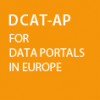
|
|
|
Name: Core Public Service Vocabulary (CPSV) Description: The Core Public Service Vocabulary Application Profile is a data model that has been developed in the context of a Working Group for describing public services. The main focus of the CPSV-AP version 1.00 was the description of public services and business events on the Points of Single Contact which each Member State had to implement in the context of the Services Directive (2006/123/EC). |
Recommendation 44 | 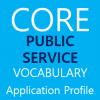
|
|
Name: Core Public Service Vocabulary (CPSV-AP) Description: The Core Public Service Vocabulary Application Profile is a data model that has been developed in the context of a Working Group for describing public services. |
Recommendation 44 | 
|
|
Name: CAMSS Ontology Description: The CAMSS Ontology is a formal description of knowledge as a set of concepts within the CAMSS domain and the axioms connecting its concepts and allowing for logic inferences. |
Recommendation 44 | 
|
| Solution | Description | Associated Recommendations |

|
CAMSS maintains a list with all the standards and technical specifications recommended by the Member States of the EU. | Recommendation 44 |

|
The CAMSS Ontology is a formal description of knowledge as a set of concepts within the CAMSS domain and the axioms connecting its concepts and allowing for logic inferences. | Recommendation 44 |
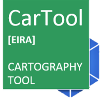
|
The Cartography Tool (CarTool©) brings together high-level support for the EIRA© as a plug-in for the popular ArchiMate® modelling tool Archi®. It includes both editing features, to model solutions using the EIRA©, and querying functionalities to query an EIRA©-based Cartography of solutions. CAMSS Team. | Recommendation 44 |
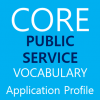
|
The Core Public Service Vocabulary Application Profile is a data model that has been developed in the context of a Working Group for describing public services. The main focus of the CPSV-AP version 1.00 was the description of public services and business events on the Points of Single Contact which each Member State had to implement in the context of the Services Directive (2006/123/EC). |
Recommendation 44 |
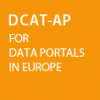
|
The DCAT Application Profile for data portals in Europe (DCAT-AP) is a specification based on the Data Catalogue Vocabulary (DCAT) developed by W3C. This application profile is a specification for metadata records to meet the specific application needs of data portals in Europe while providing semantic interoperability with other applications on the basis of reuse of established controlled vocabularies (e.g. EuroVoc) and mappings to existing metadata vocabularies | Recommendation 44 |
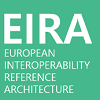
|
The European Interoperability Reference Architecture (EIRA©) is an architecture content metamodel defining the most salient architectural building blocks (ABBs) needed to build interoperable e-Government systems. The EIRA© provides a common terminology that can be used by people working for public administrations in various architecture and system development tasks. The EIRA© was created and is being maintained in the context of Action 2016.32 of the ISA² Programme. The EIRA uses (and extends) the ArchiMate language as a modelling notation and uses service orientation as an architectural style. | Recommendation 44 |
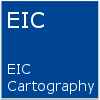
|
The European Interoperability Cartography (EIC), as defined by the Decision (EU) 2015/2240 is a “repository of interoperability solutions for European public administrations provided by Union institutions and Member States, presented in a common format and complying with specific re-usability and interoperability criteria that can be represented on the EIRA”. The Decision (EU) 2015/2240 further states that “interoperability solutions and updates shall, where appropriate, be included in the EIC and be made available for re-use by European public administrations”. | Recommendation 44 |

Location Framework Blueprint
|
EULF Blueprint Recommendation 7 on reuse of SDI/INSPIRE models for digital public services contains recommendations to ensure SDI/INSPIRE data and services are discoverable in thematic, national, and EU catalogues and portals. EULF Blueprint Recommendation 11 to reuse existing authentic data, data services and relevant technical solutions where possible, contains a recommendation to use an online catalogue of re-usable technical solutions to find relevant solutions and references the European Commission catalogue of re-usable technical solutions on Joinup. | Recommendation 44 |

|
The main objective is to create a shared European data model about representation powers and mandates, which allows powers/mandates information originated in the information systems of one country to be directly processed automatically by the information systems in other country. The data model will be tested in real life through pilots with some MS and the technical specification will be put forward to the CEF eID Operational Management Board for endorsement and proposed to be incorporated in the CEF eID sample implementation and extension of the CEF eID technical specifications. | Recommendation 44 |

|
IMAPS is a user-friendly online questionnaire, designed as a self-assessment tool to assist public service owners to evaluate key interoperability aspects of their digital public service. Not only can IMAPS be used to assess the interoperability of any public service – from open data portals, and e-voting platforms, to public procurement services, and much more – it is applicable to services at all levels of government (international, national, regional and local). |
Recommendation 44 |
|
This is the source code for Joinup (https://joinup.ec.europa.eu/). Joinup is a collaborative platform created by the European Commission and funded by the European Union via the Interoperability solutions for public administrations, businesses and citizens (ISA²) Programme. It offers several services that aim to help e-Government professionals share their experience with each other. We also hope to support them to find, choose, re-use, develop and implement interoperability solutions. |
Recommendation 44 | |

|
Language barriers in the EU make the European market fragmented and decrease its economic potential. The EU institutions aim to overcome language obstacles and increase cross-border e-commerce by building open multilingual tools and features free of charge. This public multilingual knowledge management infrastructure will support e-commerce solutions, such as machine translation, localisation and multilingual search, by creating interoperable multilingual classifications and terminologies that will be easily reusable by small and medium-sized enterprises (SMEs) and public administrations. SMEs are currently at a disadvantage compared to big companies due to the high cost of providing multilingual services. | Recommendation 44 |

LIMAPS v1.0.0 |
This is the Beta version of the Legal Interoperability Maturity Assessment of a Public Service (LIMAPS) survey. This Beta version of the LIMAPS Survey has been released on the 21 April 2020 on Joinup. It is a user-friendly online questionnaire, designed as a self-assessment tool to assist public service owners to evaluate key legal interoperability aspects of their digital public service. The current Beta version of LIMAPS (LIMAPS v1.0.0 Beta) is available at the EU survey portal: https://ec.europa.eu/eusurvey/runner/limaps-beta. |
Recommendation 44 |

OIMAPS v1.0.0 |
DG DIGIT, European Commission, Europe Description: This is the Beta version of the Organisational Interoperability Maturity Assessment of a Public Service (LIMAPS) survey. This Beta version of the OIMAPS Survey has been released on the 21 April 2020 on Joinup. It is a user-friendly online questionnaire, designed as a self-assessment tool to assist public service owners to evaluate key organisational interoperability aspects of their digital public service. The current Beta version of OIMAPS (OIMAPS v1.0.0 Beta) is available at the EU survey portal: https://ec.europa.eu/eusurvey/runner/oimaps-beta. |
Recommendation 44 |

TIMAPS v1.0.0 |
his is the Beta version of the Technical Interoperability Maturity Assessment of a Public Service (TIMAPS) survey. This Beta version of the TIMAPS survey has been released on the 02 July 2020 on Joinup. It is a user-friendly online questionnaire, designed as a self-assessment tool to assist public service owners to evaluate key technical interoperability aspects of their digital public service. The current Beta version of TIMAPS (TIMAPS v1.0.0 Beta) is available at the EU survey portal: https://ec.europa.eu/eusurvey/runner/timaps-beta This release is composed of the following elements:
|
Recommendation 44 |

SIMAPS v1.0.0 |
This is v1.0.0 of the Semantic Interoperability Maturity Assessment of a Public Service (SIMAPS) survey. This version of the SIMAPS survey has been released on the 02 July 2020 on Joinup. It is a user-friendly online questionnaire, designed as a self-assessment tool to assist public service owners to evaluate key semantic interoperability aspects of their digital public service. The current version of SIMAPS (SIMAPS v1.0.0) is available at the EU survey portal: https://ec.europa.eu/eusurvey/runner/SIMAPS_v_1_0_0 The release is composed of the following elements:
|
Recommendation 44 |


